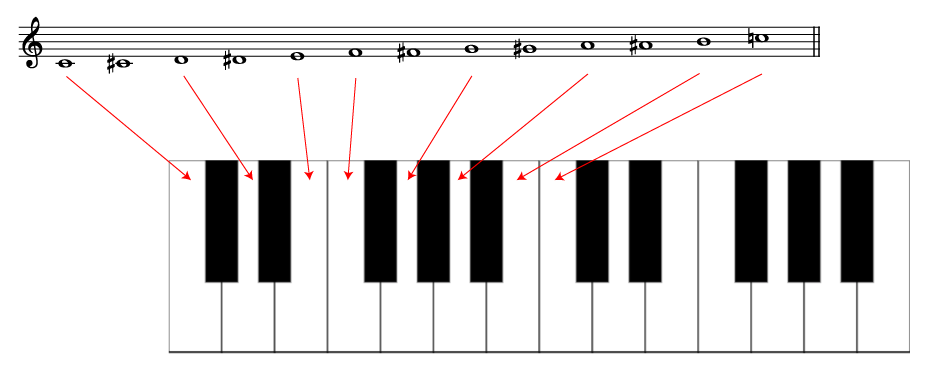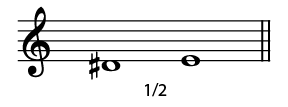Reference : seconds
Seconds can be major, minor, augmented or diminished. Below you can see that the number of half steps determines the quality of a second.
Major second, 1 whole step or 2 half steps:

Minor second, 1 half steps:

Augmented second, 3 half steps:

Identifying seconds
Seconds are probably the easiest interval to identify. However, it is essential to be able to identify seconds in order to be able to identify other intervals.
To determine the type or quality of second, we need to know the order of the notes (C, C#-Db, D, etc.), remembering that all natural notes, except E-F and B-C, are a whole step apart and that there is an altered note (a black key on the piano) between them:

With this in mind, we can count the number of half steps per second:
C - D, major second, two half steps, one whole step:

D# - E, minor second, one half step:

G# - A#, major second, two half steps, one whole step:

Eb - F#, augmented second, three half steps:

Another way to identify seconds
If both notes are natural, we don't need to count the number of half-steps, if we remember that only the seconds E-F and B-C are half-steps. If there are accidentals:
- Make all the notes natural and determine the quality.
- Add the accidentals and see how the interval is affected.
Example: G#-A#:

- G - A, major second (only E-F and B-C are minor).
- Add a sharp to G. The interval is now smaller, it becomes a minor second
- Add a sharp to A, the interval is now larger, it becomes a major second.
Another example: C#-D double sharp:

- C-D is a major second (only E-F and B-C are minor).
- Add a sharp to C. The interval is now smaller, it becomes a minor second
- Add a sharp to D. The interval is now larger, it becomes a major second.
- Add a second sharp to D. The interval is now even larger, it becomes an augmented second.
See I > Intervals for related entries. To learn about go to Tutorials > Intervals.
